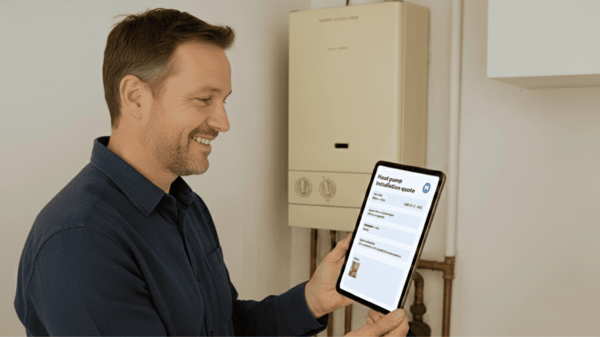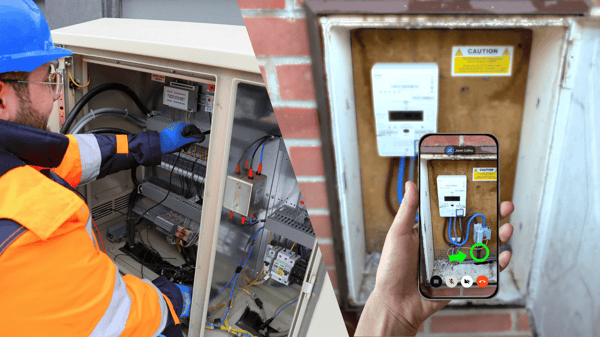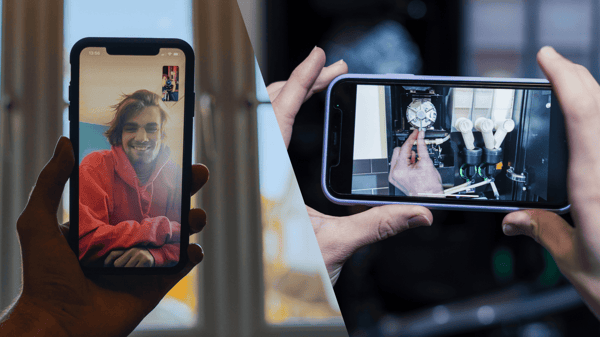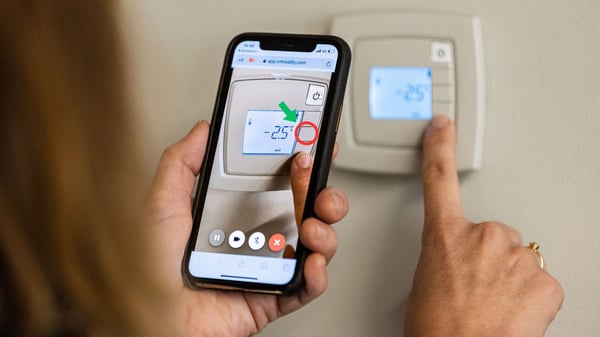To help you identify how remote visual assistance support can create value in your company, we have summarized our customers' most common usage areas - what we refer to as use cases.
Shared experience from our customers
Several of these use cases are valid regardless of which type of industry your company works within. However, an important question for you to consider when identifying which use cases are most relevant to your company is not where remote assistance can be used but how it can create the most value. You can come up with many ideas on how to use it but focus on the ones that bring real benefits, such as cost savings, increased customer satisfaction, efficiency improvements, etc.
1. Customer support
If you are a product or service supplier, you know that an important part of the buyer’s experience is the support provided after their purchase. There will always arise unexpected issues; in some cases, it might be a malfunctioning product, or in other cases, the user struggles to understand how to get the product to work. No matter the reason, they will turn to you for the support they need.
As a supplier, this is a point of interaction where you can boost customer satisfaction by providing quick and efficient support so the customer can continue their operations. At the same time, you can also improve your first-time fix rate and keep down support-related costs, a win-win situation!
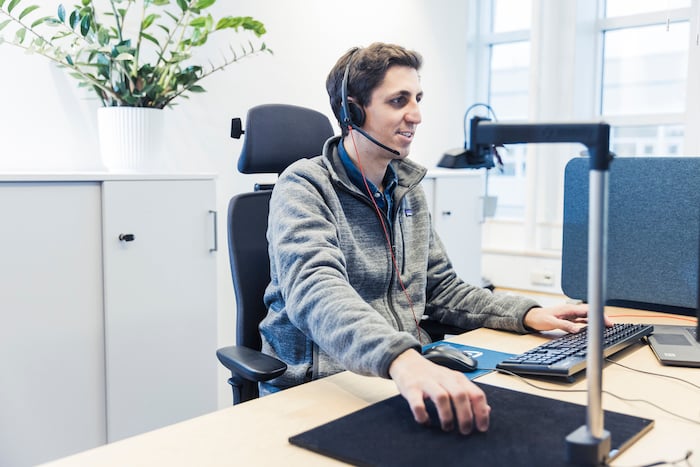
Using remote visual assistance, you can help with two very important steps of the support process:
Troubleshooting to diagnose the error
Use XMReality to see what the customer sees so you can identify the reason for their issue. Suppose you don’t have the knowledge needed to help the customer solve the problem instantly. In that case, you can record the session so that the next person can immediately get up to speed on the issue by watching the video before connecting with the customer. In other cases, you can identify which spare parts are needed so that when you send a technician, they have the right skill set and equipment to manage the replacement.
Problem resolution by guiding the customer to solve the issue
Once the error has been established, it’s sometimes an issue that the customer can solve themselves; they need to be guided step by step, which remote assistance is perfect for. This leads to quicker resolution time, saved costs, and saved trips that are good for the environment.
2. Maintenance
In a typical production process, many of the KPIs are related to your maintenance. You don’t want unnecessary machine downtime because maintenance takes too long. Or, in other cases, you don’t want the resolution of unscheduled downtime to be dependent on an outside expert having to travel to your location! Each hour of stand-still can be extremely costly in larger production lines.

With remote video guidance, you can quickly connect with the experts needed for your maintenance, even if they are in a completely different location, to let them guide you through the process. Usually, there are two types of maintenance carried out, and remote guidance works for both:
Predictive/planned maintenance
For this type of maintenance, you can assess the situation before an on-site visit, give a colleague some extra information, and make sure everything is well prepared. If something unplanned still occurs, connect with an expert through remote video guidance.
Unscheduled maintenance
When something suddenly comes up and needs to be solved quickly, you can instantly connect with the expert(s) needed to get instructions on identifying and solving the problem. In critical scenarios, XMReality allows one technician to start the troubleshooting and help the customer mitigate the effect on their production. In contrast, another technician starts the travel toward the site. Once they arrive, the first technician has already gotten a grip on the issue while showing the customer that you take their incident seriously and don't waste any time.
3. Training
One area of usage that is rapidly growing amongst our customers is training for knowledge transfer purposes and product training.
Training for knowledge transfer purposes is used to help recruits faster understand how to solve problems and shorten their onboarding by having internal experts guide them without being on-site. This also allows the expert to onboard multiple people simultaneously from the comfort of their office.
With XMReality's step-by-step instructions, you can receive all the steps needed to conduct remote training directly in the application. The remote training instruction set eases companies' onboarding of new operators or technicians and helps them understand specific tasks or operations.
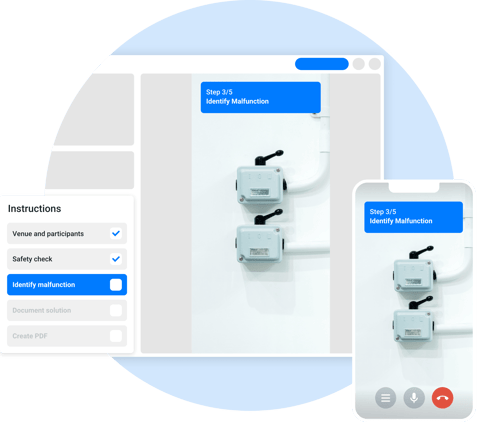
Product training on a newly installed machine is another scenario where XMReality is handy. Here, the supplier can offer remote product training after installation through XMReality, which allows for a faster start-up without waiting for travel time, security clearance, and dealing with a crowded factory floor.
The limit of 20 participants in one call also makes XMReality a perfect option for many training scenarios.
4. Installation and commissioning
When a customer orders a product from you, installation can be part of the delivery, at least for more complex products such as production machines. Here you can use remote guidance to guide the customer through some of the steps in the installation process. In other cases, you have your personnel who manage the installation, and they can then use remote guidance to connect with experts across your company for additional help with some of the process steps. The great thing is that you can invite several people into the call to ensure the right expertise is at hand. That way, you can manage the installation process more resource-efficient manner - without compromising on quality.
Once the equipment is installed, the next step is to make sure that it works as it should and find which settings work best for this setup - this is generally referred to as commissioning. For this stage of the process, remote guidance is a great tool to use since this usually takes time, and problems can arise unexpectedly. So whenever the customer needs expert help to adjust some settings or identify why something isn’t working optimally, you can instantly connect with them using remote video guidance.
5. Audits and quality checks
Ensuring your equipment is up to standards is important from an efficiency and safety perspective. Inspecting is vital to your predictive maintenance planning or quality assurance routines. Remote guidance can perform audits remotely instead of sending someone to the site. It’s also perfect for documenting audits and inspections by using the record function simultaneously as you use the guiding features to highlight observations.
Our enhanced “step-by-step instructions” functionality lets you use pre-defined checklists and procedures during your XMReality call. This ensures that remote tasks are consistently performed for higher quality. Apart from having clear steps that you tick off during the call, you can export all documentation afterward, ensuring the activity is properly documented for full compliance.
Depending on the exact use, you can create benefits such as decreased warranty cost, improved process for FTA (Factory Acceptance Tests), and in some cases, package it into an aftermarket service provided to your customers.
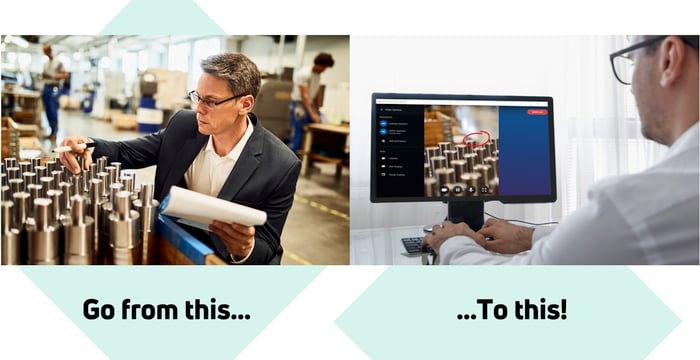
6. Internal support
Internal support between colleagues is one important use case that value shouldn’t be underestimated. Often a company consists of workers with a wide variety of skill sets and expertise - but sharing that expertise and helping each other is not always the easiest thing. Especially since you are sometimes separated by geographical distances or organizational structure. Remote video guidance is a great tool for supporting colleagues and encouraging collaboration and knowledge sharing.
XMReality visual assistance is a great tool when onboarding new coworkers in areas such as technical support or field service to shorten the onboarding phase. Remote video support from a mentor is just one call away, and you can also pre-record videos of standard repair routines to use as training material or build a knowledge base around best practices.
How to validate your use case
These are some of the most common use cases that we at XMReality see in our customers, but of course, there are many more, depending on what type of business you have. Often, a company using remote visual assistance has multiple use cases and continuously discovers new application areas.
Once you know which use case(s) could benefit your company, a good next step is to conduct a pilot where you verify this use case and get a chance to test the application in a structured way.


